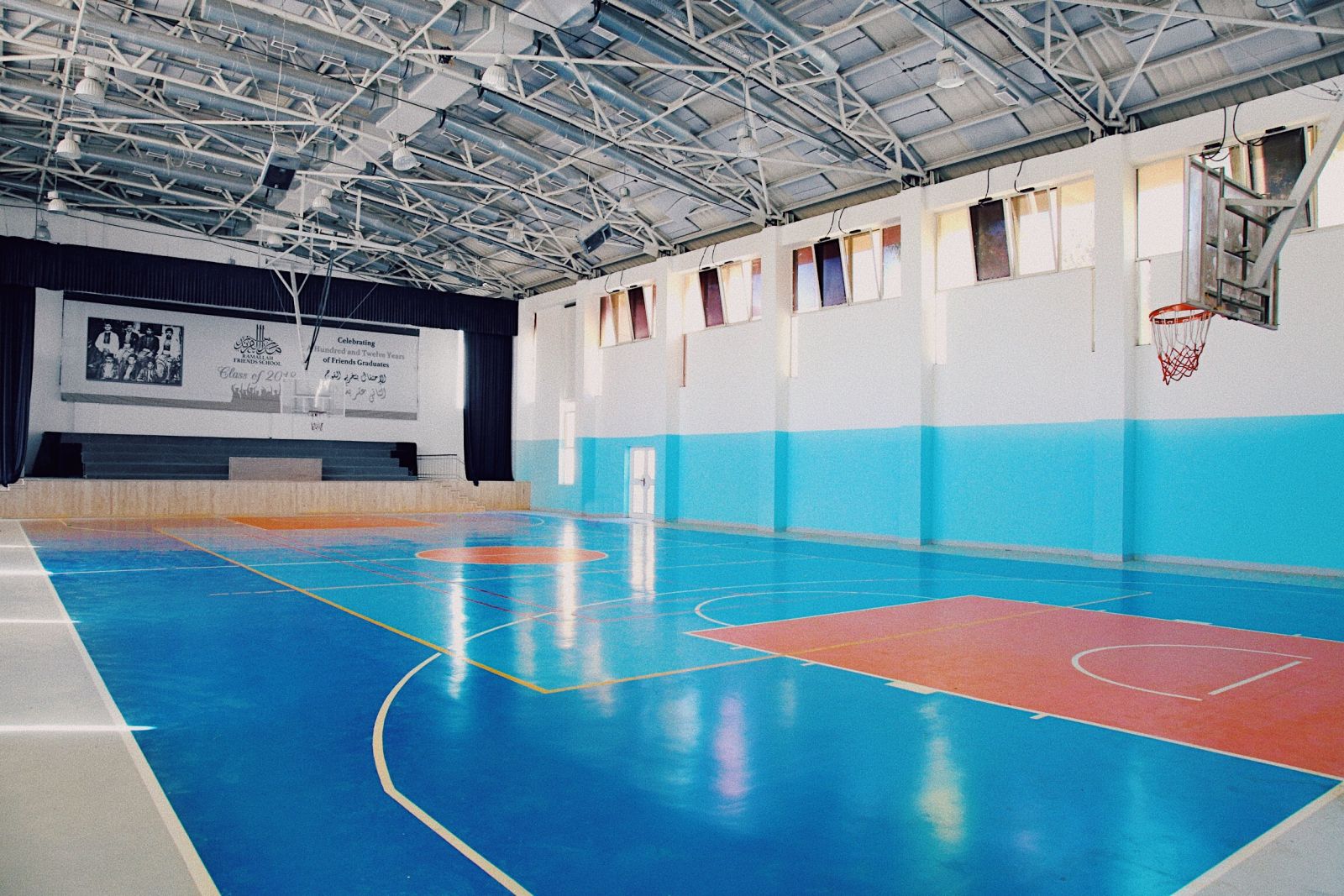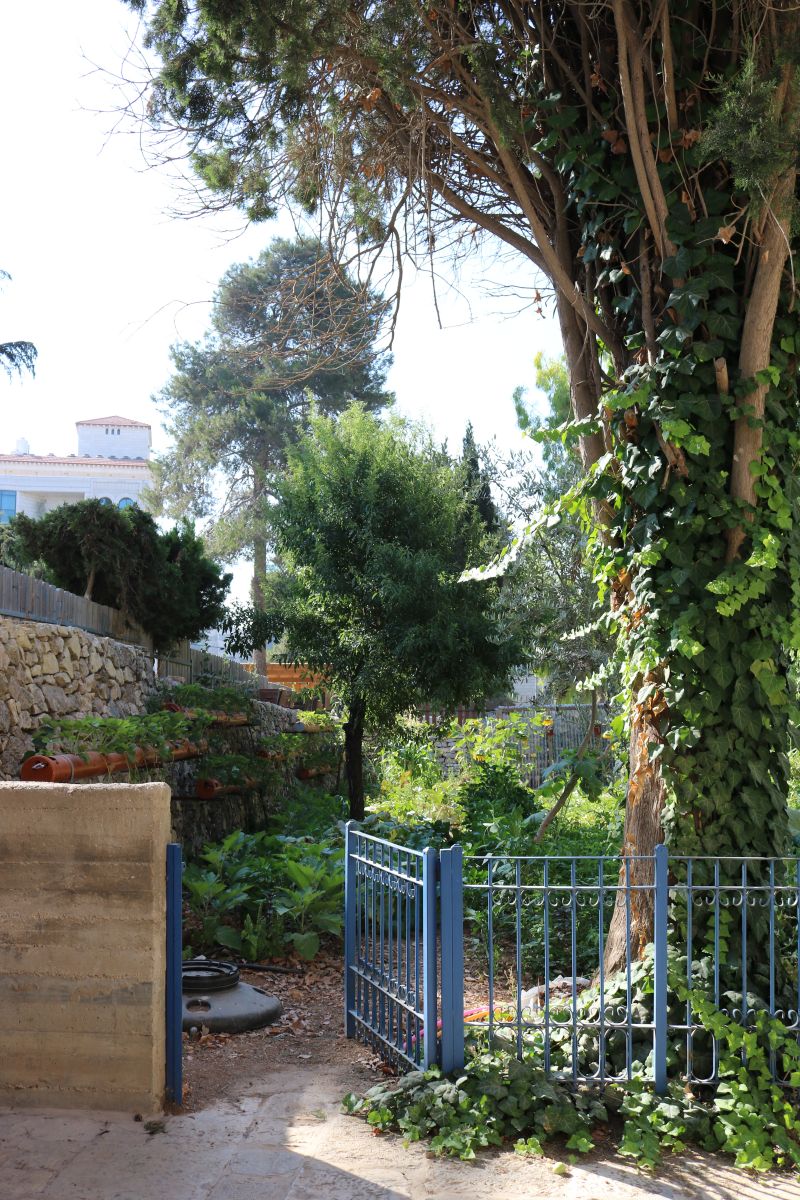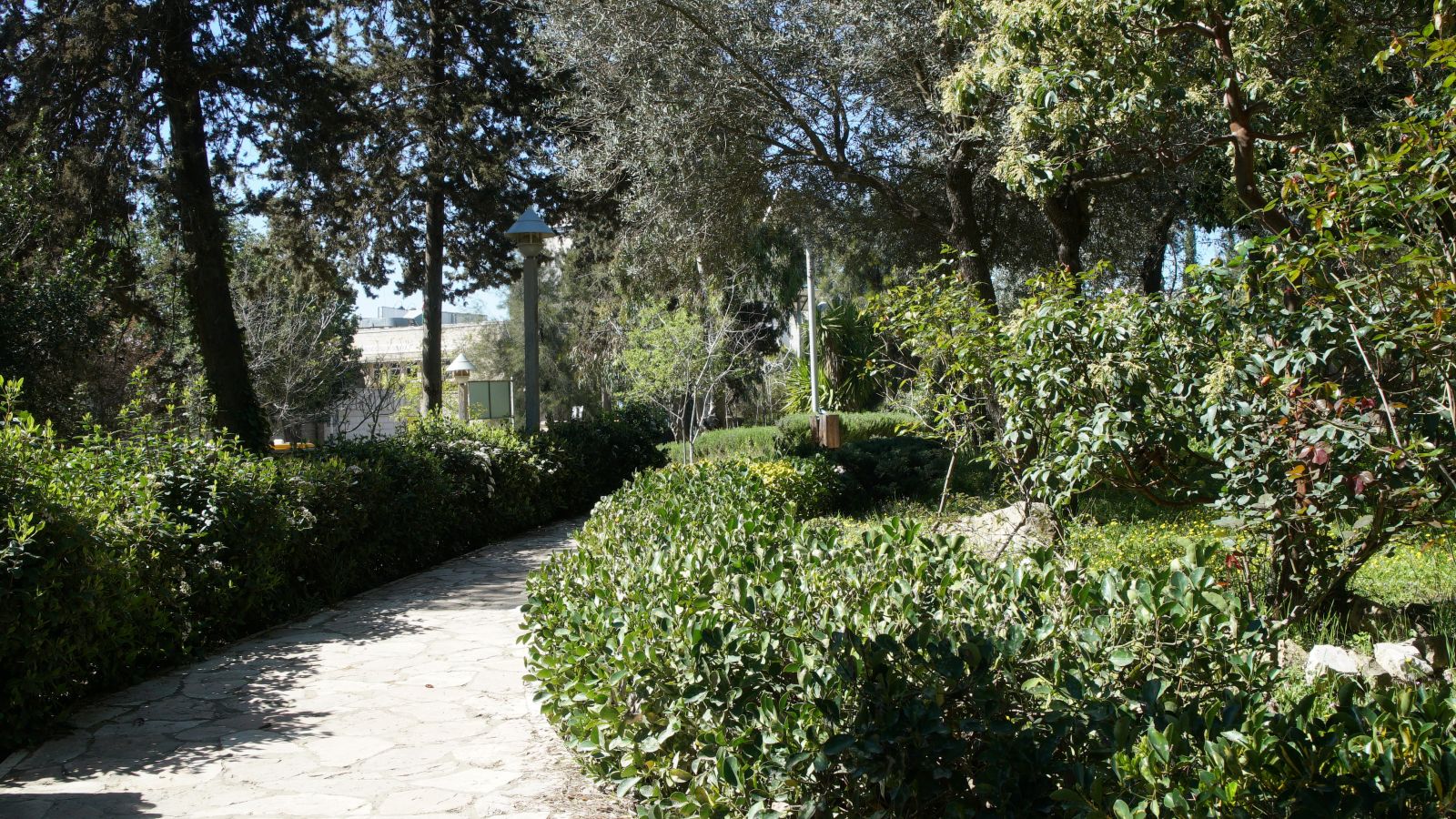Upper School
The campus is located in the city of El-Bireh on the main street (Al-Nahda Street) connecting both the cities of Ramallah and El-Bireh together. It is a few hundred meters away from the center of city of Ramallah—Al-Manara. The campus is 23,376 square meters and includes many buildings, sports facilities and outdoor areas.
Constructed in 1914 by funds from American Quakers and used by British and Turkish rulers as a hospital during the First World War, the Main Administration Building of the Upper School has seen a lot of action. During and after World War II and the Palestinian Nakbah in 1948, the building was used to accommodate refugee children.
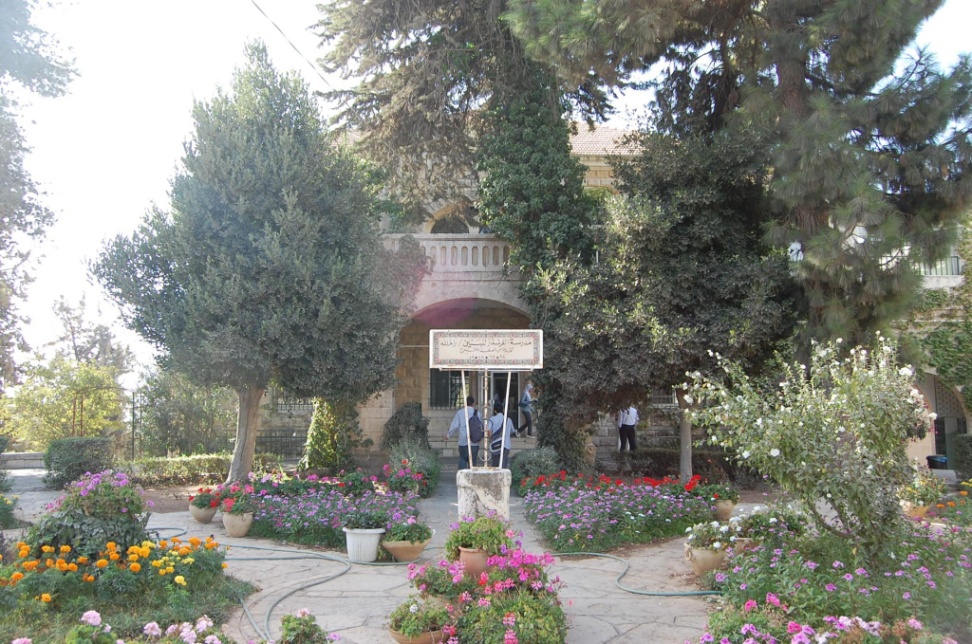
Despite wars, earthquakes and the passage of more than 100 years since its construction, this majestic building continues to be the center of the educational life at the Upper School. With thousands of students studying or living there at some point in time, it maintains a special place in the hearts of many of our graduates, former students, teachers and staff.
Today, the Main Administration Building stands as one of the most unique, historic and impressive landmarks in Ramallah. With four stories, including basement and attic, the educational center houses a cafeteria, student lounge area, administration offices, the Fuad Zaru Library and many classrooms. The beneficiary of numerous renovations, the building is equipped with central heating, computers and projectors in every classroom, and complete Wi-Fi coverage.
At the same time the Upper School's Main Administration Building maintains a traditional character, hearkening back to the early days of the school. With its thick walls, exquisite arches, stone tiled floors and stately architecture, this structure serves as a unique and practical connection with both past and future.
The building is composed of two stories and a small underground part with a total area of 750 square meters. It was constructed at two stages and built to host eight classrooms. It is connected to the Main Administration building by an arched bridge, which was constructed at the same time as the first floor.

The Middle School building is composed of two connected buildings. The first building (previously called New Building) was constructed in 2009 and the second in 2016. The total area of the building is 3360 square meters.
In 2016, 6th grade students joined 7th and 8th grade students in this one facility, allowing the Lower School to focus on grades 1-5, and the High School to function as a college preparatory environment for students grades 9-12.
Different from the existing traditional way of teaching in Palestine, the region and worldwide, (with teachers lecturing and classrooms connected by a corridor) this Middle School offers an innovative model of spatial arrangement to allow for a more varied and flexible learning environment and to support different learning modalities and increased collaboration. In this building, teachers and students create a learning community together.
Spaces such as the Da Vinci Studios, gallery spaces, media center, an outside courtyard and study areas invite students to be experimental, creative and innovative. Students are naturally connected, learning from and about their surrounding environment.
Designed by Fielding Nair International, an international company based in Tampa, Florida that specializes in school design, this building is environmentally sustainable (photovoltaic cells, sun breakers, led lighting, cisterns for rain water collection), accessible to disabled school population, and optimized for technology supported learning.
More: "A Pictorial Story: RFS Middle School Building"
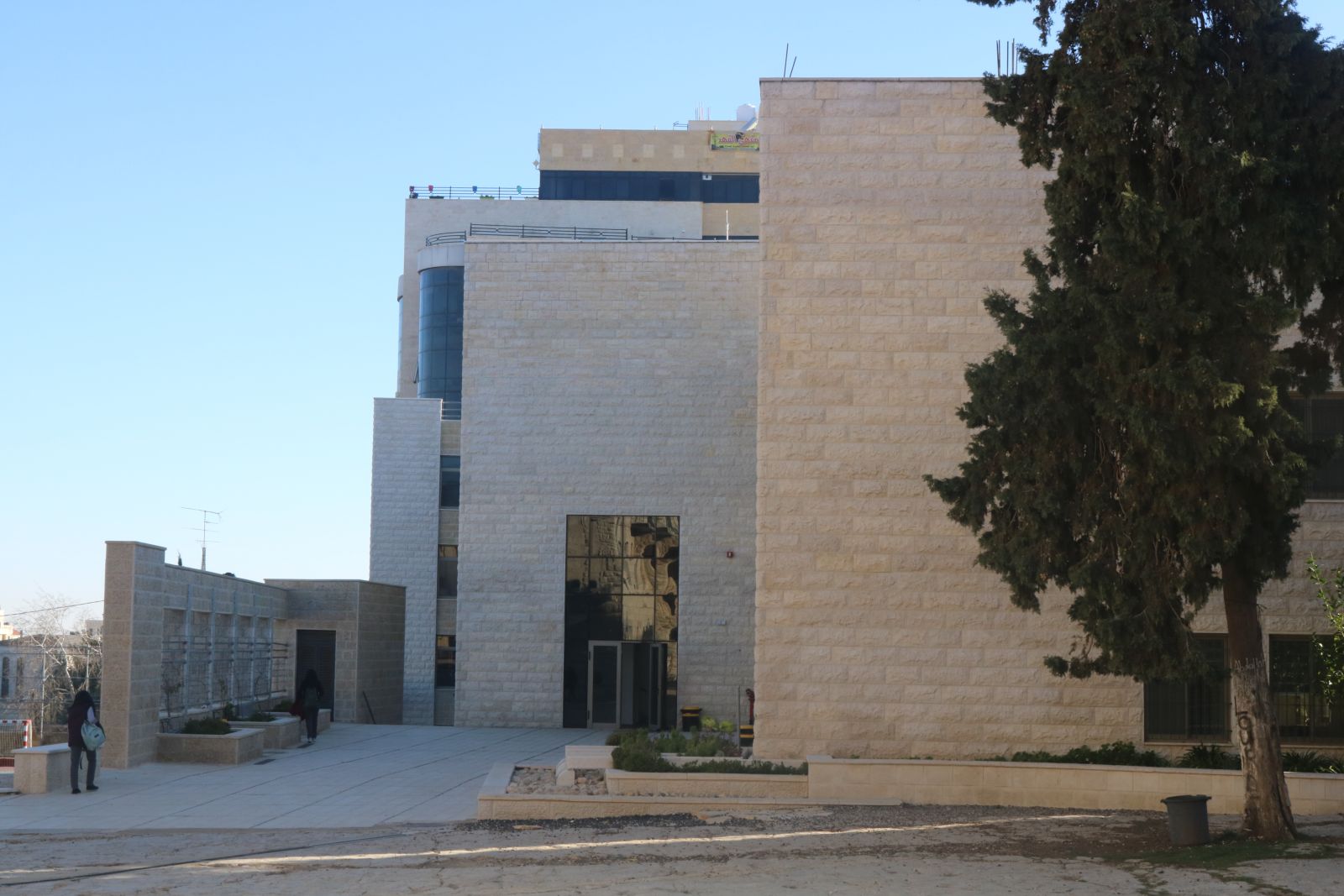
Completed in 1997, with a total area of 1400 square meters, the Science and Arts
Building prepares our students for the challenges and opportunities of advanced education in all areas of science, technology and arts.
After renovation in 2014, the building hosts three science labs (chemistry, biology and physics), a technology lab, two science classrooms, a multimedia studio, a computer lab, and two art studios. In 2017 a recording studio was added to the multimedia lab for the launch of the school radio.
Our multi-purpose gym and sports facility was completed in 2004, with a total area of 1650 square meters.
Today it serves as both a gymnasium and a very large assembly hall that is capable of meeting the needs of our largest on-campus events and activities. The assembly hall includes sports activities such as basketball and badminton and plays host to book fairs, art exhibits and other large-scale undertakings, including the graduation commencement. The building also includes four apartments for use by RFS international staff members.
Grant House was built in 1933 with a total area of 650 square meters.
The building hosts the Head of School’s house and office, Communications Department, Facilities Management Department, Finance Department and Accounting Office.
Artificial Turf Soccer Field
The soccer field, an international size artificial turf (FIFA star 3) field, is located across the street, to the east of the Upper School campus, with a total area of around 9,000 square meters, the facility is unique in the region for its scale and quality and is a huge source of pride for our faculty, students and alumni. The school is especially excited to be able to make available the use of this unrivaled facility to our wider community and neighbors in Ramallah area.
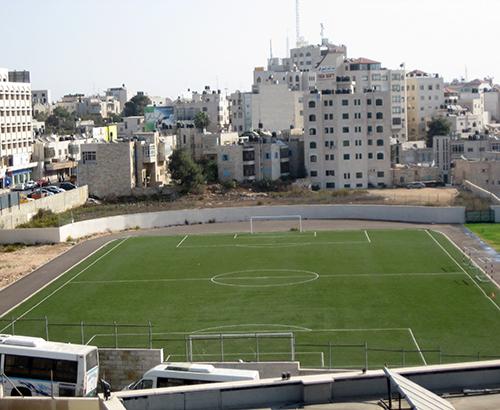
Basketball Courts

Upgraded and expanded in 2011, the courts provide a safe, enjoyable environment for our students to play basketball, soccer, volleyball and handball. Our basketball courts are a source of pride and a sign of innovation for students, faculty and alumni alike. Buried beneath the courts is a very large water cistern system (480 square meters) that provides much-needed and scarce water resources to the whole school. The school has 8 water collection cisterns with a total capacity of more than 2500 cubic meters.
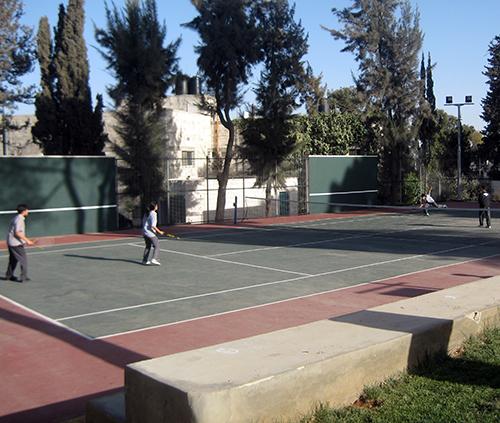
Tennis Court
Our Tennis court has been a facility for generations of students who otherwise would have had no way to experience this unique sport. Initially developed in the 1920s right by the school entrance, the court was the only one in town. Newly resurfaced and renovated in 2009, the court still remains the only such court in the Ramallah/El-Bireh area.

Under the shade of the great eucalyptus trees that hang over the stage as an umbrella, the Upper School’s large stone amphitheater is a center of student life and culture. It is a place that is engraved in the memory of each and every graduate of the school. The amphitheater is also the place where students can perform Palestinian folkloric dancing (debkah), music and theater. It is also the site of an annual bonfire, which is a highlight of the entire school year.
The amphitheater is currently under renovation.
Friends School Organic Garden and Greenhouse
Established in 2003 by a school initiative, the organic garden is a source of pride for the school as it produces organic clean vegetables and fruits that are usually consumed by the school community. The challenge of how to integrate environmental education with the production of agricultural products is something the school is still developing. The area of the total garden, including the greenhouse, is 1500 square meters.
Kaykab Educational Garden
Established in 2001, with 6,000 square meters of land, the project was developed by the school in response to the need for focusing awareness on environmental issues. Named after a local endangered plant, the strawberry tree or Kaykab (in Arabic), the goal of the garden is to preserve biodiversity and promote ecological literacy.
Today, the garden is home to hundreds of labeled plant species native and non-native, with or without medicinal and nutritional values. In 2013, a mud brick Eco room with a wind catching element was added to the Garden as an exhibition space for environmental Models.



.JPG)



